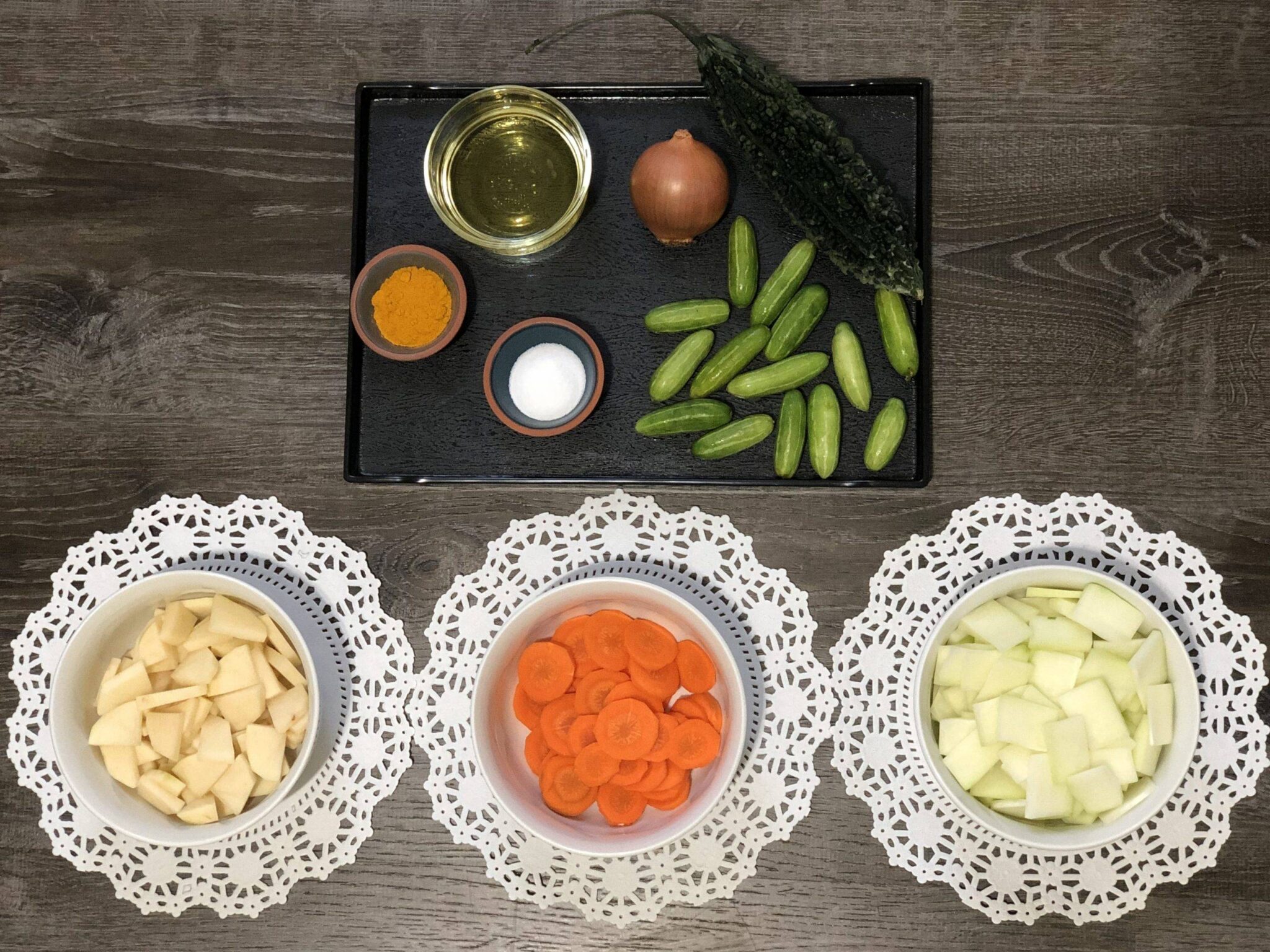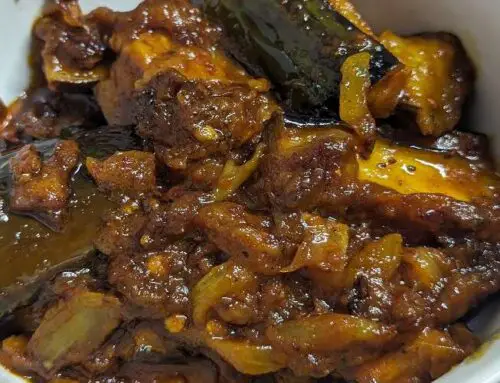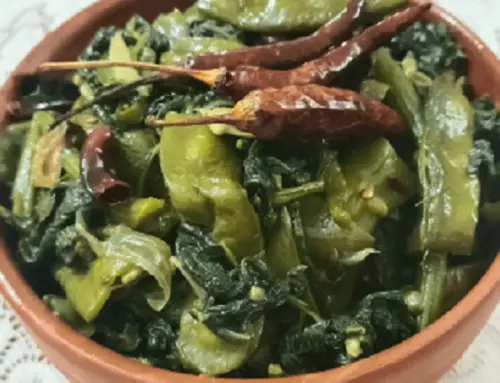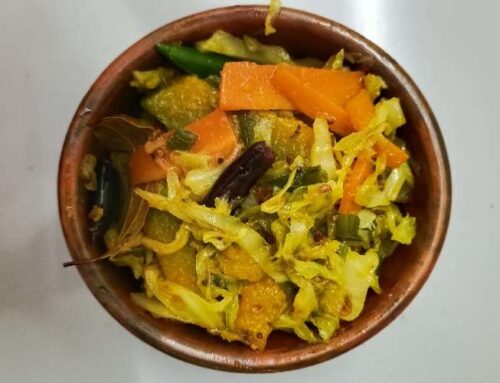Bengalis’ obsession with meat and fish is not a crazy myth. However, our food consists of more than just non-vegetarian and pescatarian dishes. There is a wealth of plant-based cuisine made using seasonal and indigenous Bangladeshi vegetables that compete with meat and fish dishes. Bengali cuisine is often basic, focusing on nutrition and making great use of fruit and veggies.
What exactly is it?
Paanch Mishali Tarkari, often known as Five Mixed Vegetables, is a famous Bengali dish. This is basically a torkari — a spicy vegetable dish that’s not too dry like roasted vegetables or too watery like vegetable curries. In Bengali, we call it makha-makha, which roughly translates as “creamy and coated.” Because there isn’t much water used, the veggies stay intact and release their own juices and textures during the cooking process, resulting in a creamy and smooth appearance.
The origins of culinary culture are multifaceted, and no one reason can be identified. The lush wealth of united Bengal, where even more than a hundred types of vegetables flourish at any given season, can also be credited to the many techniques of cooking with various veggies. Bengal is known as the “Land of Greens and Gourds” by food historians. There is a notion that Bengali food is merely “mach and bhat” (fish and rice), which we all laugh at. However, whether it is a lavish feast or a modest weeknight supper, the most of the recipes are plant-based.
This excellent and plentiful culinary tradition is exemplified by the Pach Mishali Shobji, which translates to Five Vegetable Medley. This is a complex vegetarian curry made using at least five different varieties of seasonal vegetables. It also makes use of Panch Phoron, a distinctive spice combination native to Bengali-speaking regions, as well as plenty of fresh handmade ghee. The components are prepared with great care so that each veggie tastes completely unique. The ultimate effect is a sensory overload of flavors and textures that is both comfortable and magnificent.
Non-vegetarian cuisine is referred to as “Amish” in Bengali, which means “fleshy,” whereas vegan food is referred to as “Niramish,” which means “fleshless.” No extravagant Bengali meal would be complete without at least three Niramish dishes. Examples of this culinary approach may also be found in our earlier Pohela Boishakh dishes – here and here. In short, we treat our veggies with the same love and attention that we do our meat and fish. In our tradition, there are several culinary words that represent distinct preparations and techniques of cooking vegetables, such as bhorta, bhaji, torkari, labra, shukto, dalna, chorchori, chechki, and ghonto, to mention a few.
Vegetable Preparation
To ensure internal structure, each vegetable must be par-cooked separately. They will then be blended and carefully cooked together until the flavors merge and the consistency softens somewhat. In essence, this is comparable to French Ratatouille in that particular care is required to cook the veggies so that each vegetable tastes authentically of itself. We will use two distinct cooking procedures depending on the vegetable: dry frying and blanching. Using these two par cooking strategies, all of the veggies will complete cooking at the same time, ensuring that none of them are overdone while the others are undercooked.
- Dry Frying – Although this method is well-known in Chinese cuisine, it also appears in Bengali cuisine. The objective is to sauté the primary components in moderately heated oil to remove intracellular moist and enhance the taste. The release of moisture also aids in the preservation of the protein’s or veggies’ overall appearance.
- Blanching – is a culinary method where a vegetable or fruit is electrocuted in boiling hot water, removed after just a short time span, and afterwards placed in icy water/cold shower. Blanching conserves the appearance, taste, and nutrient content of the food.
This dish is incredibly customizable to whatever seasonal and local veggies you have on hand. The overall aim is to incorporate at least five different types of veggies. I used a blend of traditional Bangladeshi veggies and vegetables that seemed to be in my refrigerator (and local markets) . Each veggie will require a cup. Keep in mind that you do not even have to use all of the veggies on this list. If you’re having a bigger group, it’s a lovely rainbow plate of vibrant veggies. If you are not attending, preparing a large quantity will help you with meal planning for the rest of a week!
First, prepare the veggies by washing and patting them dry to eliminate any moisture. Chop five different veggies, but not just any vegetables; they must all have a rhyme and rhythm. Try to chop them all to the same size, around 3-4 inches. To bring everything together, something sharp like palwals (potol), velvety like ridge papaya, orange and crisp like carrots, and generous like potatoes.
Prepare yourself, because this stage will take a long time and patience. As I previously stated, Bengalis treat their veggies with the same attention and affection as we give our fish and meat. This vegetarian curry rivals any fish or meat dish in terms of flavor. It is the extra affection you provide that will end in a completely nutritious and wonderful cuisine.
Ingredients
- 1/2 green papaya
- 1 medium-sized carrot
- 3 medium-sized potatoes
- 4 kankrols (optional)
- 4 pointed gourds (potol)
- 2 tbsp tablespoons sliced onion
- 1/2 cup cooking oil
- 1/4 teaspoon turmeric powder
- 1/4 teaspoon coriander powder
- 1/4 teaspoon cumin powder
- Salt to taste

Instructions
- Cut the vegetables into cubes or small slices.
- Heat the oil in a frying pan.
- Add onion and saute with salt until it turns golden brown.
- Add turmeric, coriander, and cumin powder.
- Mix well and add 2 tablespoons of warm water.
- Cover and cook for 2-3 minutes. Then add the vegetables and mix.
- Add 2 cups of warm water. Cover and cook until the vegetables soften and the water is reduced.
- Stir and fry until vegetables are cooked and the water is gone.
- Serve hot with boiled rice or roti.
Nutrition







